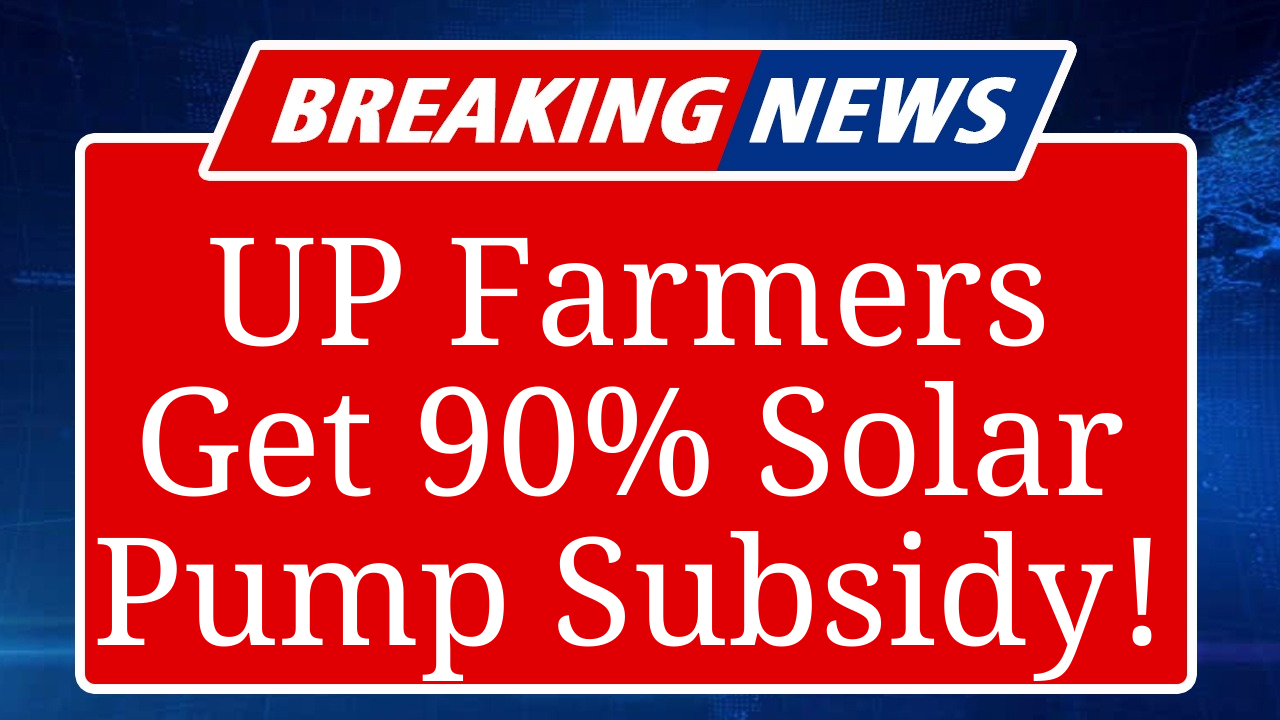Uttar Pradesh’s government has launched a solar pump subsidy scheme under PM-KUSUM, targeting over 54,000 farmers in 2024-25. Offering up to 90% subsidies, the initiative promotes sustainable irrigation by replacing diesel pumps with solar-powered ones. Farmers can apply online from February 27, 2025, selecting from nine pump types to enhance agricultural efficiency and reduce costs.
UP’s Solar Pump Initiative Empowers Farmers with Subsidies
The Uttar Pradesh government has introduced a transformative scheme under the Pradhan Mantri Kisan Urja Suraksha evam Utthaan Mahabhiyan (PM-KUSUM) to provide subsidized solar pumps to over 54,000 farmers for the fiscal year 2024-25. Aimed at promoting sustainable agriculture and reducing reliance on diesel-powered irrigation, the initiative offers significant financial support, with subsidies up to 90% for eligible farmers.
Farmers can choose from nine types of solar pumps, ranging from 2 HP to 10 HP, catering to diverse agricultural needs. The scheme, which opened for applications on February 27, 2025, operates on a first-come, first-serve basis. Farmers must apply online via the official Agriculture Department website (www.agriculture.up.gov.in) (www.agriculture.up.gov.in) and deposit a token amount of ₹5,000. The subsidies, funded by both the central and state governments, significantly reduce the cost of solar pumps. For instance, a 2 HP DC surface pump priced at ₹1,71,716 includes a combined subsidy of ₹1,03,030, leaving farmers to pay ₹63,686 after the token amount. Similarly, a 10 HP AC submersible pump, costing ₹4,13,570, receives a subsidy of ₹2,66,456, with farmers contributing ₹1,47,114.
The initiative is structured to cover all 18 administrative divisions of Uttar Pradesh, with application windows staggered over February 27 to 29, 2025. Farmers in districts like Chitrakoot Dham, Varanasi, and Meerut could apply on February 27, while those in Saharanpur, Lucknow, and Ayodhya applied on February 28. Farmers from Agra, Jhansi, and Gorakhpur divisions had their window on February 29. This phased approach ensures streamlined processing.
Special provisions exist for marginalized groups. Musahar, Vantangia, and Scheduled Tribe farmers receive a 70% state subsidy in addition to the 30% central subsidy, effectively solarizing their tube wells at no cost. Other farmers benefit from a 60% state subsidy plus the 30% central grant, resulting in a 90% total subsidy. For example, a farmer installing a 2 HP pump needs to contribute only ₹55,000, making solar irrigation highly affordable.
The scheme also includes strict guidelines. Farmers must have borewell facilities meeting specific requirements: a 4-inch bore for 2 HP pumps, 6-inch for 3-5 HP, and 8-inch for 7.5-10 HP pumps. Failure to meet these standards results in forfeiture of the token amount. Additionally, once installed, pumps cannot be relocated, and existing electricity connections are disconnected post-installation to ensure reliance on solar energy. Farmers can also access loans through the Agriculture Infrastructure Fund (AIF) with interest benefits to further ease financial burdens.
This initiative aligns with the broader objectives of the PM-KUSUM scheme, launched in 2019 and expanded in 2023, which seeks to reduce diesel dependency, enhance energy security, and promote eco-friendly irrigation. By enabling farmers to adopt solar pumps, the scheme not only lowers irrigation costs but also supports India’s renewable energy goals, contributing to reduced carbon emissions and sustainable agricultural practices.
Disclaimer: This article is based on information sourced from recent news reports and government announcements, including Energetica India, Times of India, and official PM-KUSUM portals. Data is accurate as of September 2025. Readers are advised to verify details through official channels like www.agriculture.up.gov.in for application processes and eligibility.

